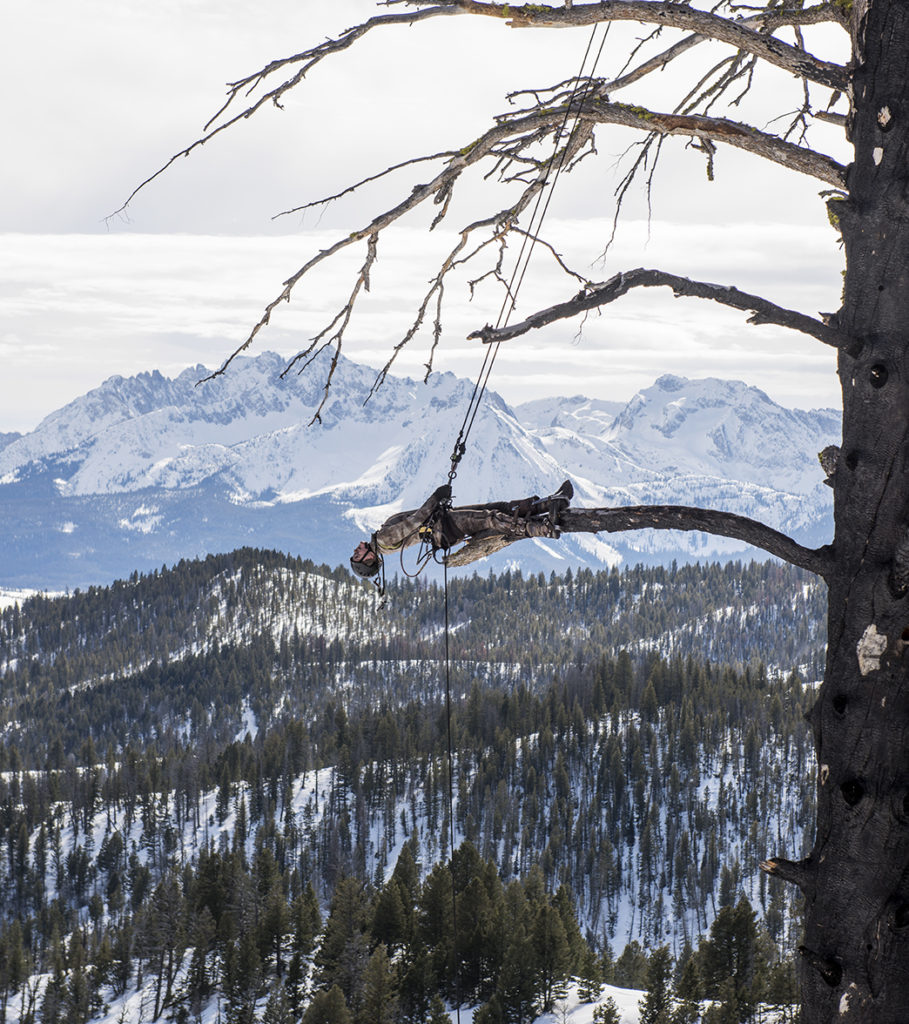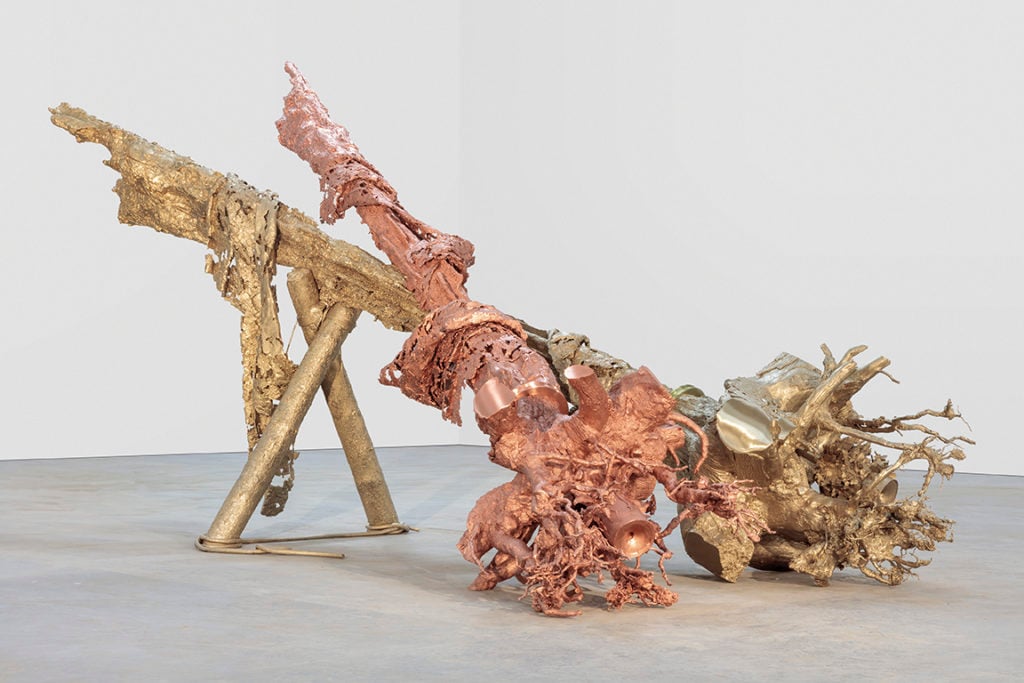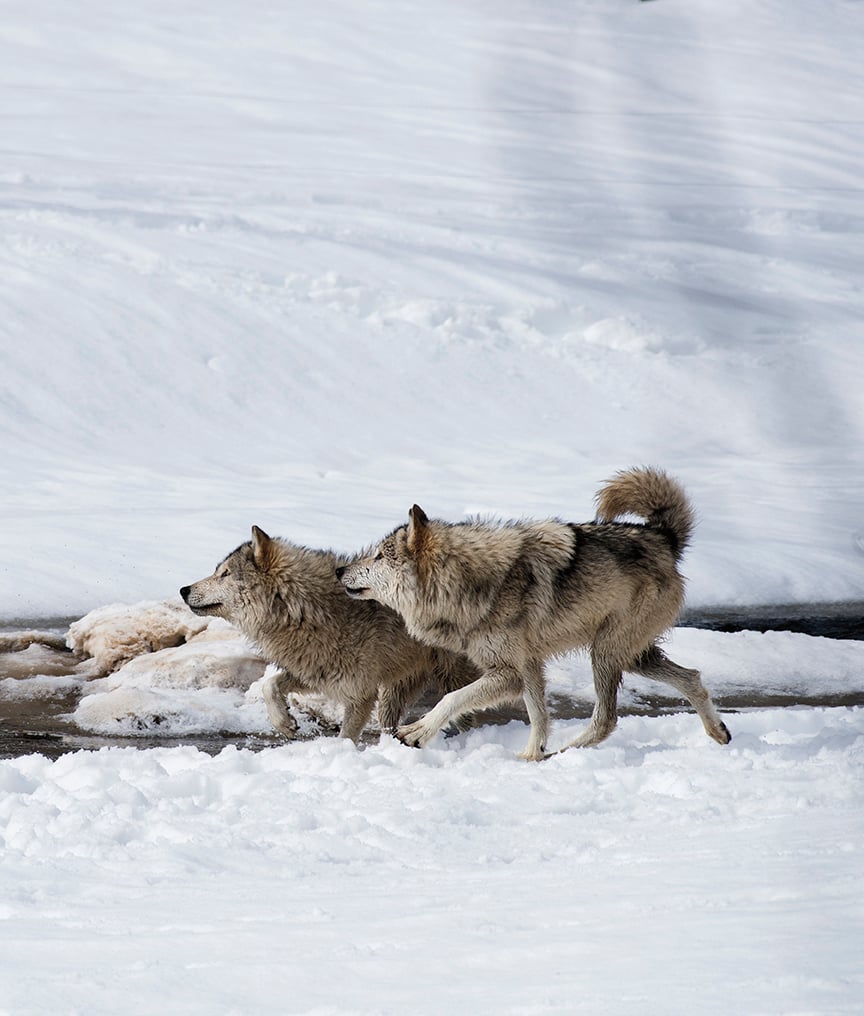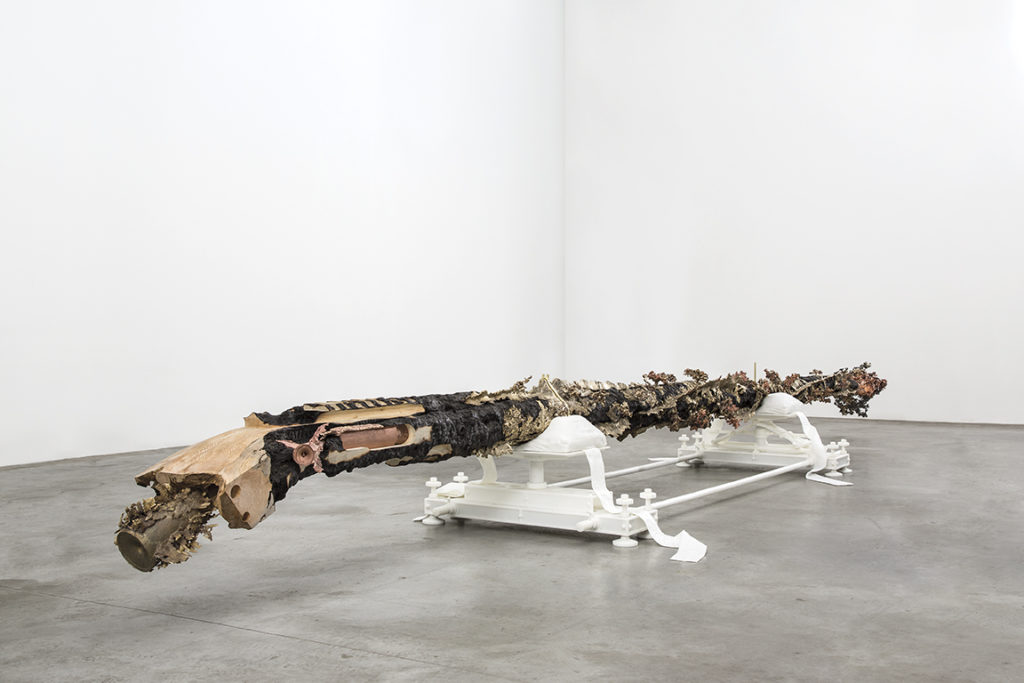On View
Matthew Barney’s First New Show in Years Suggests a Shocking Twist for the Iconoclastic Artist: He’s Becoming Conventional
At 51, the artist comes across as tentative—even conservative—in his new show at Yale.

At 51, the artist comes across as tentative—even conservative—in his new show at Yale.

Pac Pobric

On the top floor of the Yale University Art Gallery, up one flight of stairs from the museum’s sterling collection of Modern and contemporary art, an ambitious but jarring monumental sculpture by Matthew Barney sets the tone for his latest body of work—one that is stunning, but ultimately leaves the audience wanting.
Virgins (2018) is a vision of two rotted trees, one cast in copper, the other in brass, resting on two small logs tied together with rope. The enormous metal trunks, propped one against another, are modeled on decayed trees taken from the the Sawtooth Mountain range of central Idaho, where Barney spent part of three years making his latest film, Redoubt, and the works of art that accompany it.
As has been the case with Barney’s movies and sculptures since his magisterial, breakthrough Cremaster Cycle (1994–2002), there is an internal logic at work, a self-enclosed “constellation of thought,” as the Yale show’s curator, Pamela Franks, puts it in an interview with the artist published on the occasion of the exhibition. For the Cremaster Cycle, for example, Barney made a suite of five films with related sculptures, drawings, and installations, which together constitute a self-governing world of mythical creatures who operate according to their own rules.
That’s the particular charm of Barney’s art, and exactly what can make him so frustrating and impenetrable: that he lives and works in a cosmos that makes seemingly no reference to the outside world. But this particular constellation ultimately doesn’t hang together.

Matthew Barney’s Virgins (2018) is made of brass and copper. © Matthew Barney, courtesy Gladstone Gallery, New York and Brussels.
At the core of Redoubt is the story that unfolds in the film. It follows Diana (Anette Wachter, a long-range champion shooter), the Roman goddess of hunting and nature, and her companions (Eleanor Bauer, who is also the film’s choreographer, and Laura Stokes) on a wolf hunt through the snowy mountains of Idaho.
Over the course of seven days and nights, as the trio track their prey and dance through the wilderness, they are followed by a state land manager (Matthew Barney), who documents their movements in engravings on copper plates. Each evening, he returns to a small trailer by a river, where his partner (K.J. Holmes) washes the plates in electric baths. (In the exhibition at Yale, there are more 40 copper engravings, some of which Barney makes in the film, plus seven sculptures.)
Throughout the film, several themes emerge, including, most prominently, the myth of Diana and Actaeon. In Ovid’s Metamorphoses, the poet tells of how the young hunter accidentally comes upon Diana and her companions in the wild, and is punished by being transformed into a deer to be destroyed by his own hunting dogs. Barney’s land manager character suffers no such fate, and instead asks us to consider problems like the relationship between humans and wildlife and the place of government bureaucracy in nature. Unlike River of Fundament (2007–14), a film in which Barney addressed environmental degradation as directly as possible for an obscure art film, the changing climate is only a subtext in Redoubt, and the artist seems much more interested in the impact of mountain isolation on his characters’ psyches.
The film has its draws. There are handsome aerial shots of snow-capped terrain, wolf packs running through the landscape, and an impressive scene involving a minor avalanche. Like a number of Barney’s films, Redoubt unfolds exclusively through sound and movement, with not one word of dialogue throughout 134 minutes.
But the choreography is a weak narrative tool, and it mostly decorates the story and does little to provide a window into the minds of Diana or her companions, or to move the story towards resolution. Sometimes, it comes off as plain silly, as in an extended scene at the end where Holmes does an interpretive dance during an eclipse while the wolves destroy the interior of Barney’s trailer.

Matthew Barney’s film Redoubt follows the goddess of the hunt, Diana, as she and her companions track wolves in the Sawtooth Mountain range of central Idaho. © Matthew Barney, courtesy Gladstone Gallery, New York and Brussels, and Sadie Coles HQ, London. Photo: Hugo Glendinning.
It’s not that movies have to end with a clear verdict; most of Barney’s films don’t, and some of them are enormously satisfying, in part because they give us so much to look at. Compared to stunning epics like the Cremaster Cycle (1994–2002), which was full of brilliant color and dazzling set design, or even De Lama Lamina (2007), which takes place in Brazil during a riotous, throbbing carnival, Redoubt isn’t as satisfying a visual experience. It’s a more conventional film, with no outlandish costumes and few elaborate sets. It doesn’t take place in another world; we’re just in Idaho, and Barney’s character drives a plain old pickup truck.
Visual splendor and strangeness is key to the appeal of Barney’s work. One of the reasons the Cremaster Cycle was so digestible, relatively speaking, was that it produced a tremendous group of related sculptures and objects. In that phase of his career, Barney was working largely with polyesters and acrylics, which he bent and fashioned into remarkably lush, entirely alien works of art, ones that encouraged sustained attention. However did these oddities come to exist? The films gave us an origin story, and even sometimes tedious sections were worth the patience to get a richer sense of how it all came together.

Elk Creek Burn (2018) is one of the standout sculptures of Matthew Barney’s latest body of work. © Matthew Barney, courtesy Gladstone Gallery, New York and Brussels.
At Yale, there are two beautiful monumental sculptures made in large part from polyester, the material Barney knows how to use best. In Elk Creek Burn (2018), long sections of copper, lead, wood, and brass rest elegantly atop polymer that looks plush as a pillow. It’s a gorgeous and bizarre juxtaposition, but most of the objects throughout the rest of the show aren’t as novel, and don’t demand the same attention, in part because they’re made exclusively of traditional materials we see all too often elsewhere. Although Barney has been using these media since around the time he began working on River of Fundament in 2007, he’s still not agile enough with them to make them do anything quite unexpected.
Which brings us back to Virgins, the enormous double-tree sculpture. It is, without a doubt, a feat of artistry: a precisely crafted, luxurious work of art—exactly the kind of thing that has generally been Barney’s hallmark. But there’s also a harsh visual dissonance, in which the burnt orange of the copper trunk brings out a painful yellow glow from the brass, so that the piece never fully coheres. It reminded me of some of Damien Hirst’s sculptures in his garish 2017 Venice exhibition, “Treasures from the Wreck of the Unbelievable,” which was also a self-contained project, in which each part was tied to the next through a fabled origin story. (That project also had a film component.)
Let’s not be unfair to Barney: he shares little else with Hirst, who is happy to be a caricature of himself. Barney, on the other hand, has always been productively self-serious and artistically ambitious, with little appetite for the kind of popular attention that Hirst can’t live without. The major difference between the two is that Barney will likely make strong work again; Hirst will not. But he can still draw a lesson from the formerly Young British Artist, whose entire “craft” now is myth-making and story-telling with nothing else. That’s all good and well. We love a good tale. But the art has to back it up.
“Matthew Barney: Redoubt” is on view at the Yale University Art Gallery through June 16